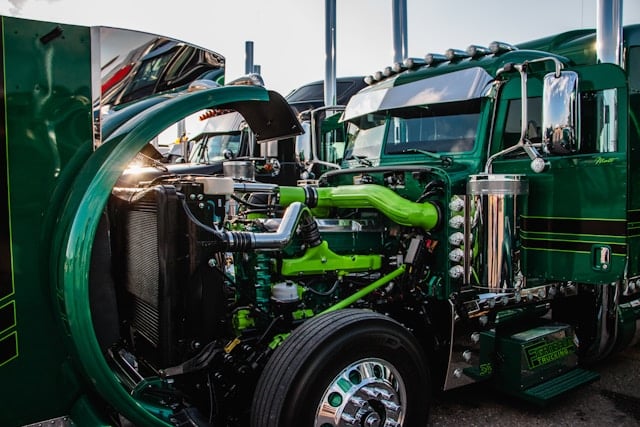How Can Advanced Ceramics Improve Heat Resistance in UK Manufactured Engines?

In the world of engine manufacturing, the quest for heat-resistant materials is unending. The high operating temperatures of engines present unique challenges for manufacturers, particularly in terms of thermal resistance. Enter advanced ceramics, a class of materials that have shown exceptional promise in this field. Ceramics, specifically ceramic matrix composites (CMCs), have unique thermal and mechanical properties that make them invaluable in high-temperature applications. This article will delve into how advanced ceramics are revolutionizing heat resistance in engines, with a keen focus on UK manufacturing.
Understanding Advanced Ceramics
To fully appreciate the impact of advanced ceramics, it is essential to understand their nature and properties. Ceramics are inorganic materials, traditionally composed of clay, earthen elements, powders, and water. They are known for their hardness, strength, and brittleness. However, advanced ceramics, also known as technical or engineered ceramics, are a cut above traditional ceramics.
A lire en complément : What Are the Latest Advances in Anti-Theft Technology for Bicycles in Urban Areas?
These high-performance materials are typically made from pure oxides, carbides, or nitrides rather than the clay mixtures of conventional ceramics. The use of these pure substances results in ceramics with superior mechanical strength, thermal resistance, and other advanced properties.
Advanced ceramics include ceramic matrix composites (CMCs), which are a subgroup made by embedding fibers within a ceramic matrix. The CMC allows the resulting material to maintain the beneficial properties of ceramics, such as high-temperature resistance, while overcoming the inherent brittleness.
Lire également : How to Optimize Indoor Air Quality with Smart Home Devices?
The Role of Ceramic Matrix Composites (CMCs)
Ceramic Matrix Composites (CMCs) are a game-changer in the world of high-temperature applications. They exhibit exceptional thermal resistance, making them perfect for use in environments where heat is a crucial factor.
CMCs are composed of ceramic fibers embedded in a ceramic matrix. This combination offers a balance of strength and toughness, something traditional ceramics often lack. The fibers lend CMCs a certain degree of flexibility, which helps to resist the material’s natural brittleness and improve its overall mechanical strength.
A significant feature of CMCs is their thermal properties. Thanks to the ceramic components, CMCs have excellent resistance to heat. They can withstand high temperatures without showing signs of wear or damage. This is crucial in engine manufacturing, where parts are routinely exposed to extreme heat.
Advanced Ceramics in Engine Applications
The use of advanced ceramics in engine manufacturing has significant benefits. For starters, the high-temperature resistance of ceramics makes them ideal for use in parts exposed to immense heat. In an engine, this includes components such as the combustion chamber, pistons, and valves.
Moreover, CMCs offer a unique combination of lightness and strength. They are lighter than metal parts, which helps to reduce the overall weight of the engine. This, in turn, can lead to improved fuel efficiency and performance. At the same time, the mechanical strength of CMCs ensures that they can withstand the rigors of engine operation.
Additionally, the thermal stability of ceramics means that they can maintain their shape and dimensions even at high temperatures. This reduces the risk of parts warping or deforming during operation, which can lead to engine failure.
The Impact of Advanced Ceramics on UK Engine Manufacturing
In the UK, advanced ceramics are starting to make their mark in the engine manufacturing industry. Companies are already exploring the use of CMCs in their products, driven by the need to improve engine performance and efficiency.
The high-temperature resistance of ceramics offers a solution to one of the most significant challenges in engine manufacturing. By using ceramic components, manufacturers can reduce the risk of engine parts failing due to excessive heat. This can improve the reliability and lifespan of engines, leading to cost savings in the long run.
Furthermore, the use of CMCs can help UK manufacturers gain a competitive edge in the global market. The superior properties of these materials can lead to engines that are more efficient, reliable, and high-performing. This can give UK-made engines an advantage over those made with traditional materials.
In conclusion, advanced ceramics, particularly CMCs, have a significant role to play in improving heat resistance in UK manufactured engines. Their unique properties make them ideal for high-temperature applications, offering a solution to one of the industry’s most pressing challenges. As more UK manufacturers embrace these materials, the future of the engine manufacturing industry looks promising indeed.
Practical Application of Ceramics in UK Manufacturing Industry
In the UK, the application of advanced ceramics, particularly ceramic matrix composites (CMCs), is gaining momentum in various heavy industries such as aerospace, automotive, and power generation where high-temperature environments are commonplace. Among these, the engine manufacturing sector stands out due to the unique challenges presented by the high temperatures during operation.
For instance, the engine combustion chambers encounter ultra-high temperatures. Traditional materials such as metals are prone to thermal expansion and warping under such conditions. However, CMCs, with their exceptional thermal shock resistance and low thermal expansion rate, maintain their shape and functionality even under these extreme conditions. Additionally, other engine components such as pistons and valves, subjected to high temperatures, have shown significant improvement in performance and durability when made from advanced ceramics.
Moreover, the use of advanced ceramics significantly reduces the overall weight of the engine due to their lighter nature compared to metals. This results in improved fuel efficiency, a critical factor in automotive and aerospace applications. Besides, advanced ceramics exhibit excellent wear resistance, further enhancing the lifespan of engine components and reducing the need for frequent replacements.
Research in advanced ceramics, supported by resources such as Google Scholar, is facilitating the additive manufacturing of engine components. This method allows complex designs with intricate details to be realised, optimising the performance of the engine parts while maintaining the benefits of advanced ceramics.
Advancements and Conclusion
It is clear that advanced ceramics, especially ceramic matrix composites, offer a solution for increasing heat resistance in UK manufactured engines. From silicon carbide to carbon fibers, these materials provide superior thermal properties and shock resistance, making them an ideal choice for high-temperature applications.
Furthermore, the incorporation of CMCs into engine manufacturing processes is not only enhancing the performance and efficiency of engines but also giving UK manufacturers a competitive edge in the global market. The use of advanced ceramics is facilitating the production of lighter, more efficient, and durable engines compared to those made with traditional materials.
Despite the promising benefits of advanced ceramics, developing high-temperature ceramics that can withstand even higher temperatures remains a challenge. However, advancements in materials science, particularly in ceramic matrix composites, are expected to overcome these limitations.
In conclusion, advanced ceramics represent a significant advancement in heat resistance technology for engine manufacturing. As more UK manufacturers incorporate these materials into their products, the future of the engine manufacturing industry appears to be on a promising trajectory. The unique thermal and mechanical properties of advanced ceramics are poised to significantly reshape the industry, driving it towards increased efficiency and performance.
